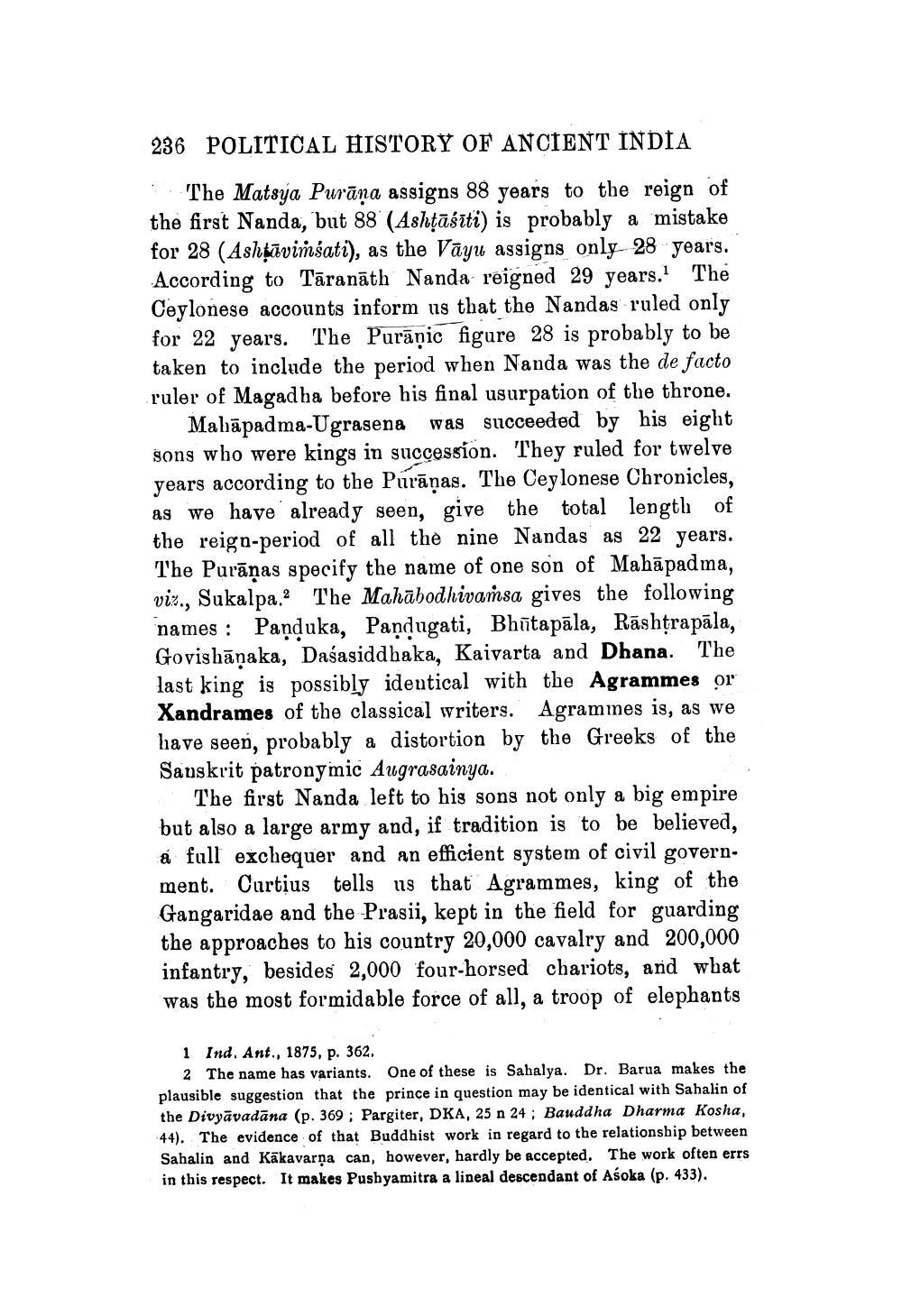________________
236 POLITIČAL HISTORY OF ANCIENT INDIA
The Matsya Purāna assigns 88 years to the reign of the first Nanda, but 88 (Ashțāśīti) is probably a mistake for 28 (Ashtūvimšati), as the Vayu assigns only 28 years. According to Tāranāth Nanda reigned 29 years. The Ceylonese accounts inform us that the Nandas ruled only for 22 years. The Purāņic figure 28 is probably to be taken to include the period when Nanda was the de facto ruler of Magadha before his final usurpation of the throne.
Maliāpadma-Ugrasena was succeeded by his eight sons who were kings in succession. They ruled for twelve years according to the Purāṇas. The Ceylonese Chronicles, as we have already seen, give the total length of the reign-period of all the nine Nandas as 22 years. The Purāņas specify the name of one son of Mahāpadma, viz., Sukalpa.? The Mahābodhivaṁsa gives the following names : Paņduka, Pandugati, Bhūtapāla, Rāshtrapāla, Govishāņaka, Daśasiddhaka, Kaivarta and Dhana. The last king is possibly identical with the Agrammes or Xandrames of the classical writers. Agrammes is, as we have seen, probably a distortion by the Greeks of the Sanskrit patronymic Augrasainya.
The first Nanda left to his sons not only a big empire but also a large army and, if tradition is to be believed, á full exchequer and an efficient system of civil govern. ment. Curtius tells us that Agrammes, king of the Gangaridae and the Prasii, kept in the field for guarding the approaches to his country 20,000 cavalry and 200,000 infantry, besides 2,000 four-horsed chariots, and what was the most formidable force of all, a troop of elephants
1 Ind. Ant., 1875, p. 362.
2 The name has variants. One of these is Sahalya. Dr. Barua makes the plausible suggestion that the prince in question may be identical with Sahalin of the Divyāvadāna (p. 369 ; Pargiter, DKA, 25 n 24 ; Bauddha Dharma Kosha, 44). The evidence of that Buddhist work in regard to the relationship between Sahalin and Kākavarna can, however, hardly be accepted. The work often errs in this respect. It makes Pushyamitra a lineal descendant of Asoka (p. 433).




